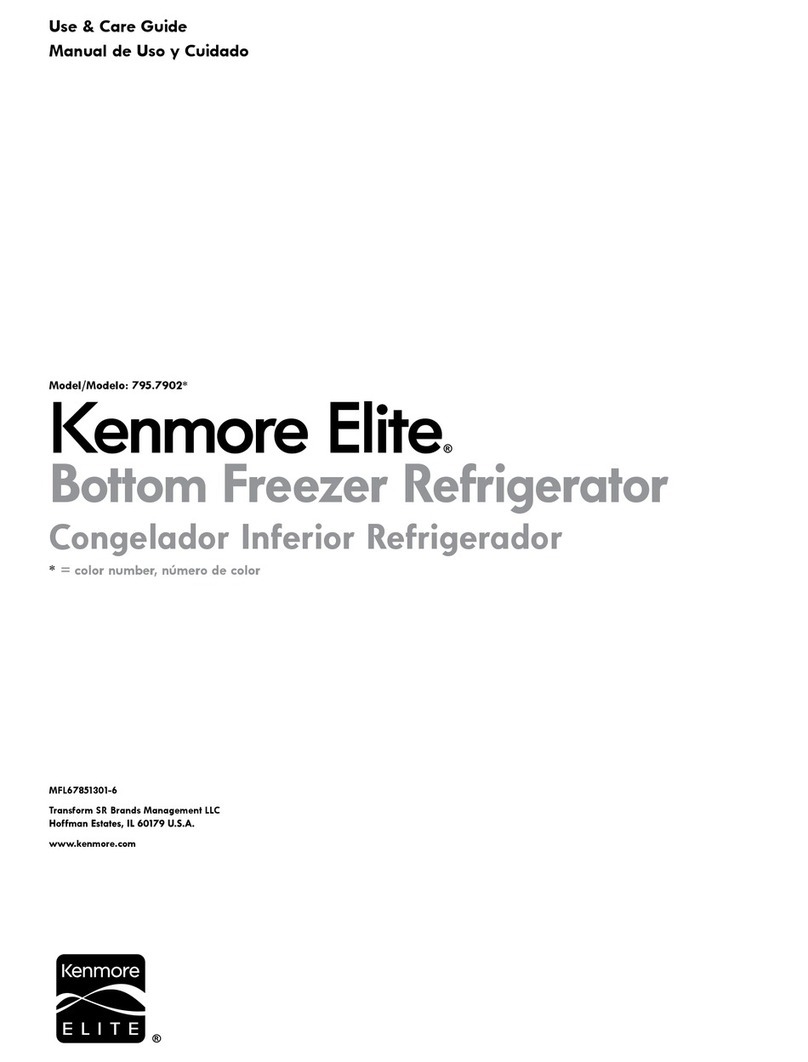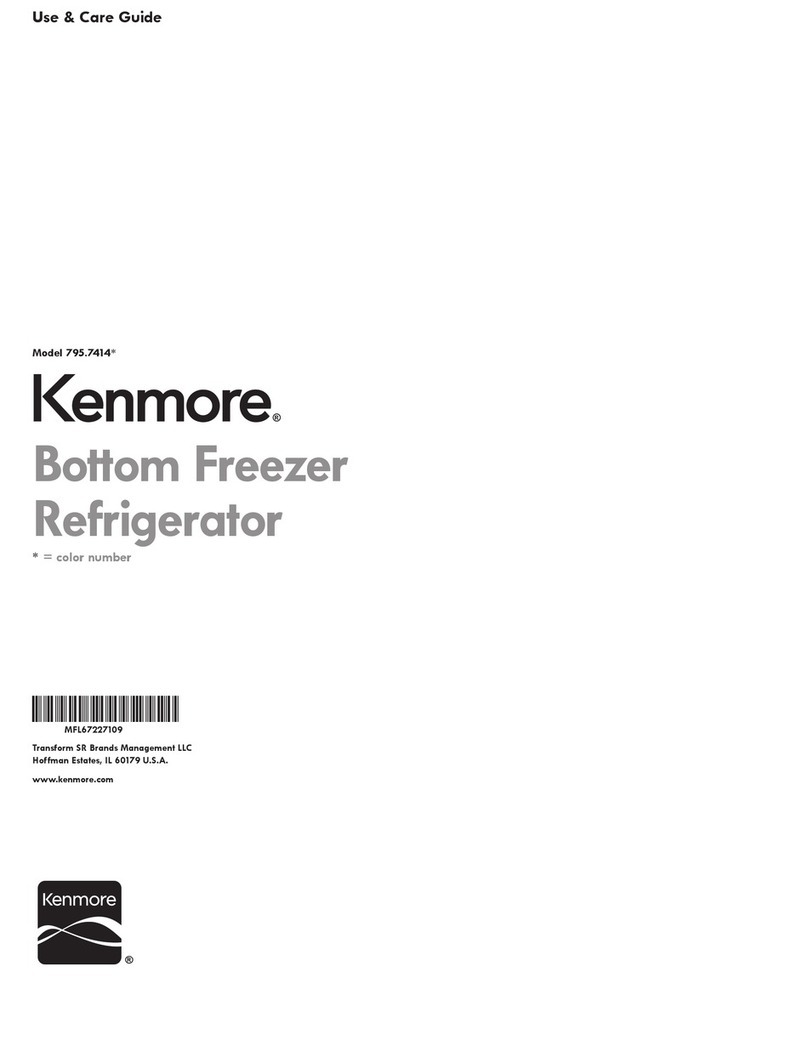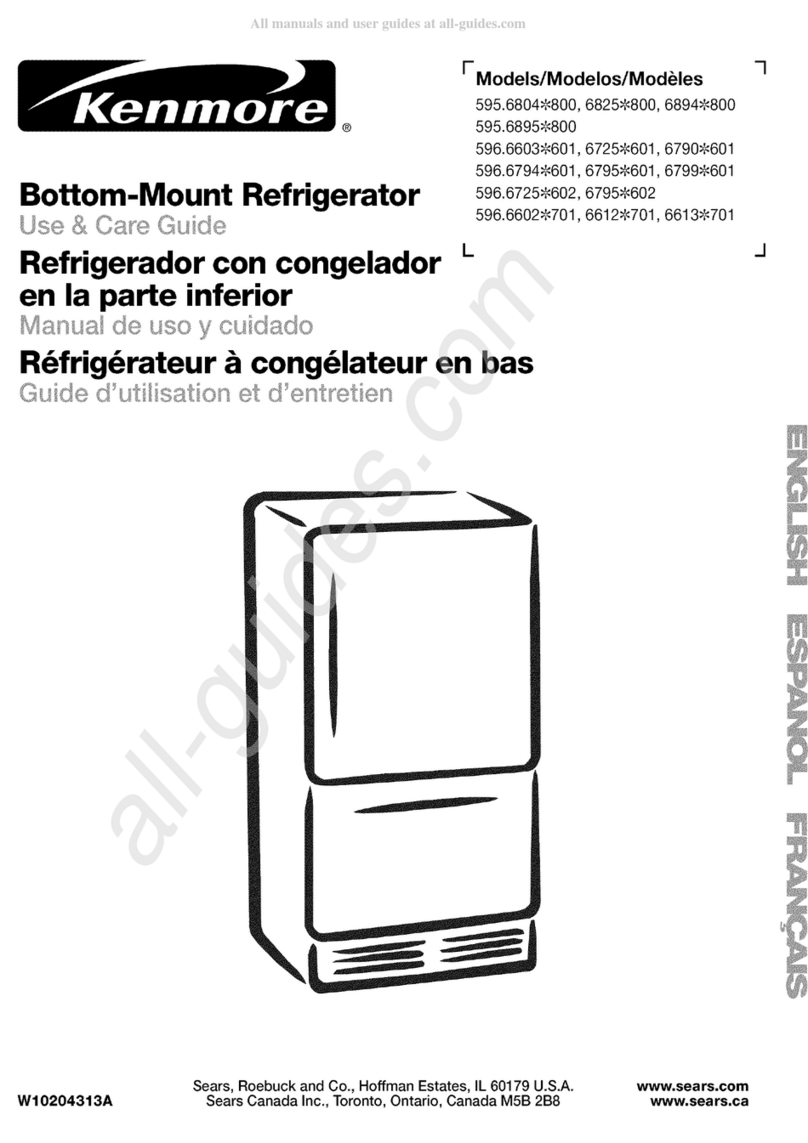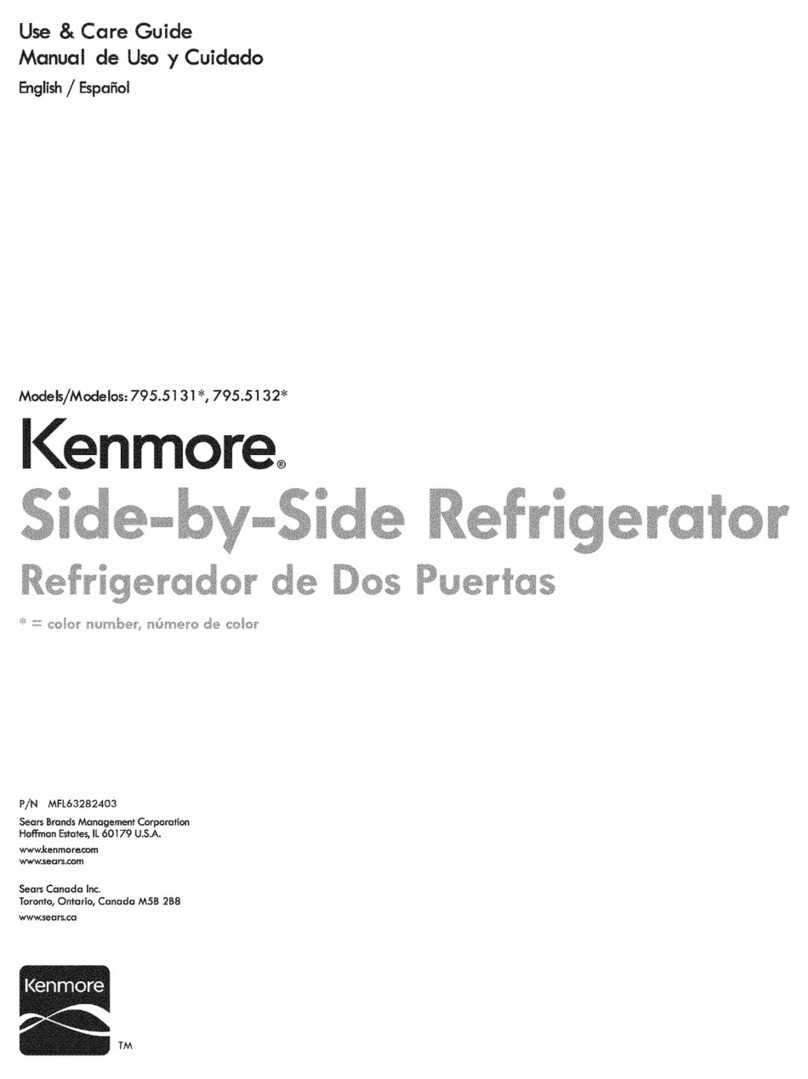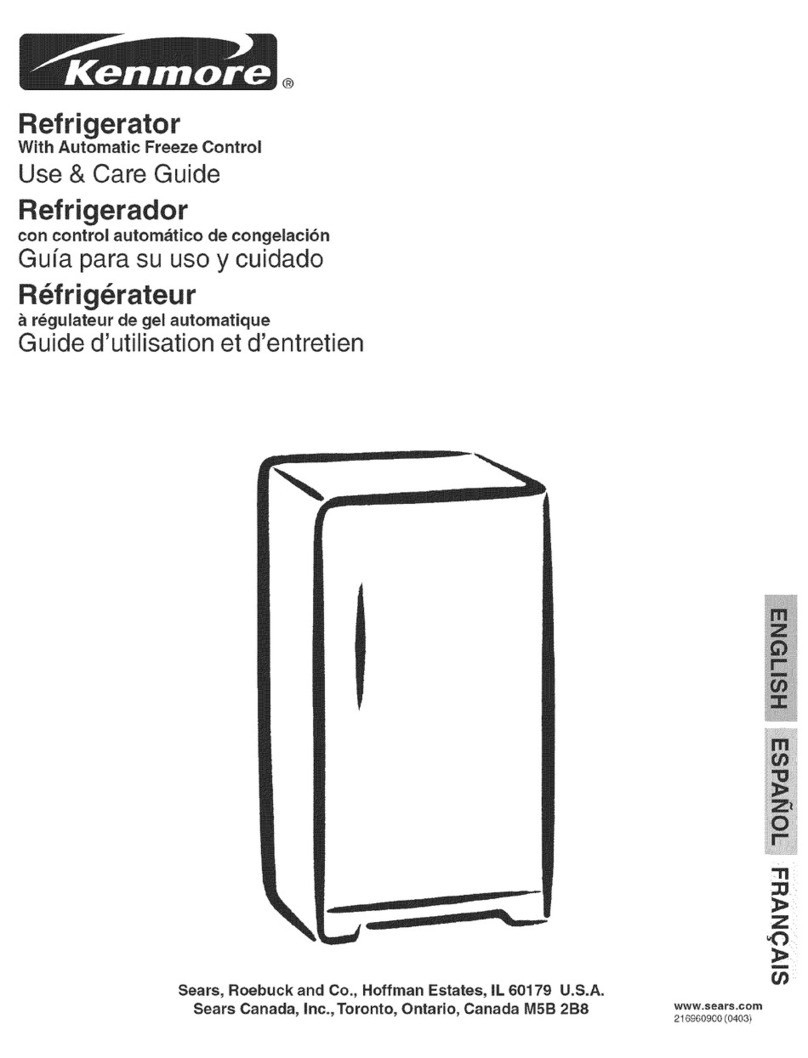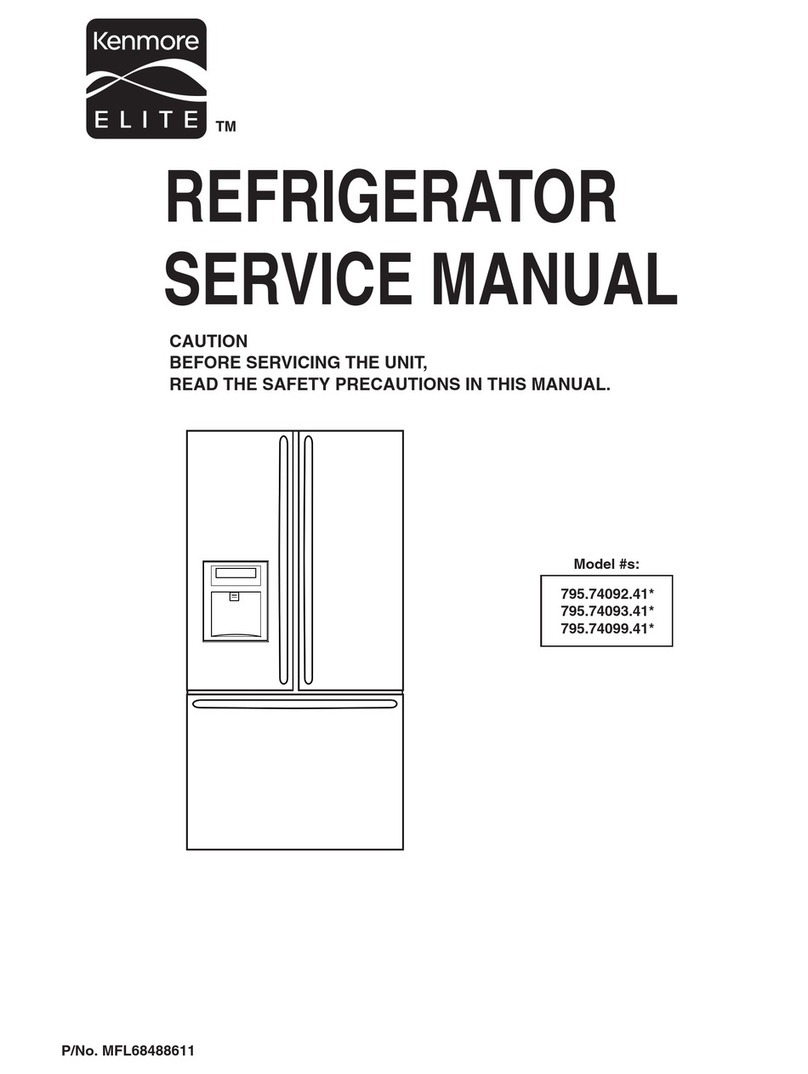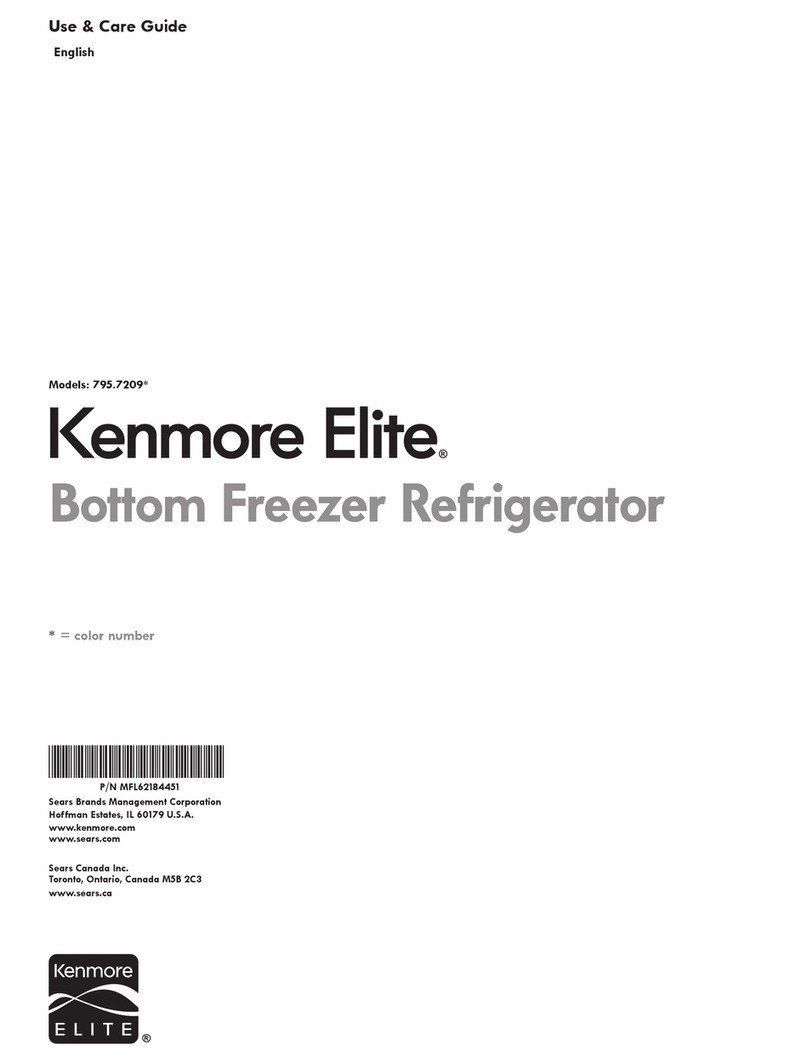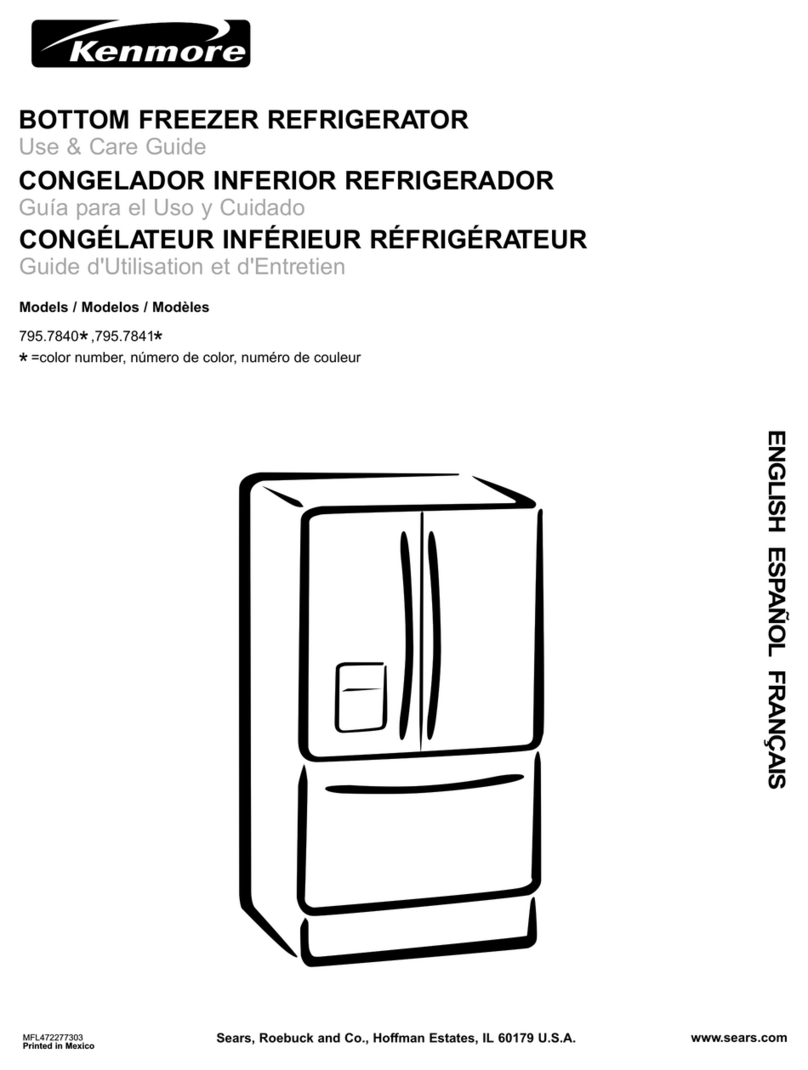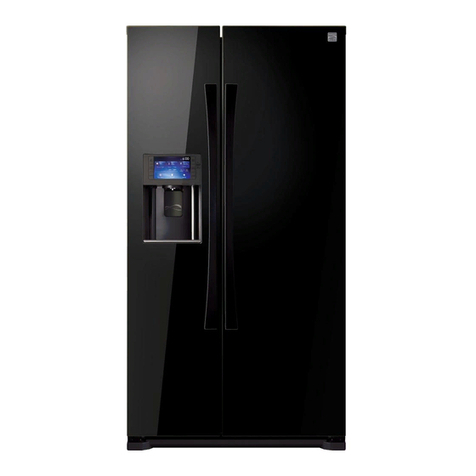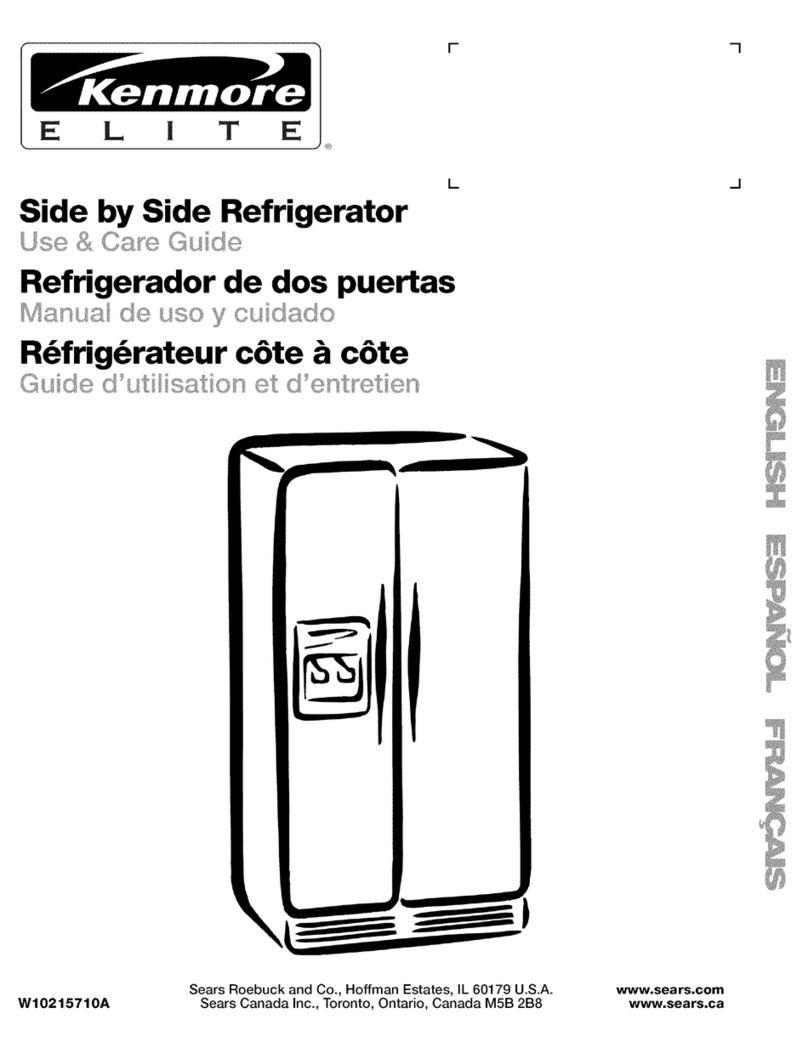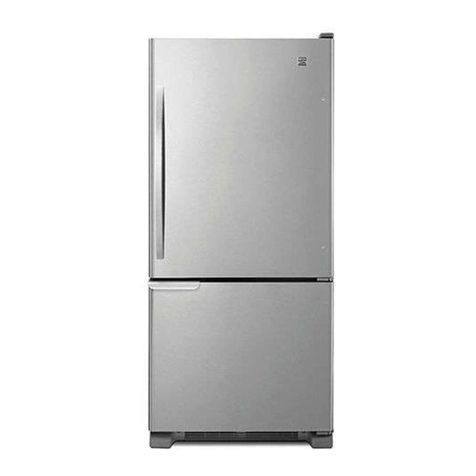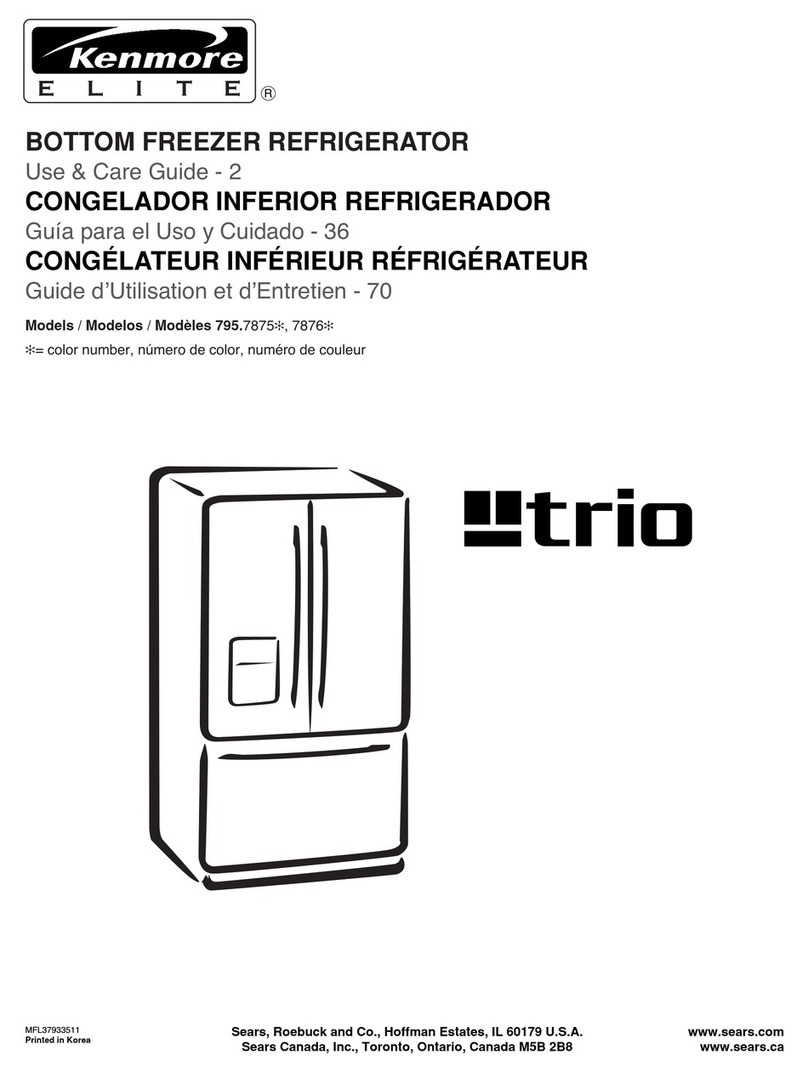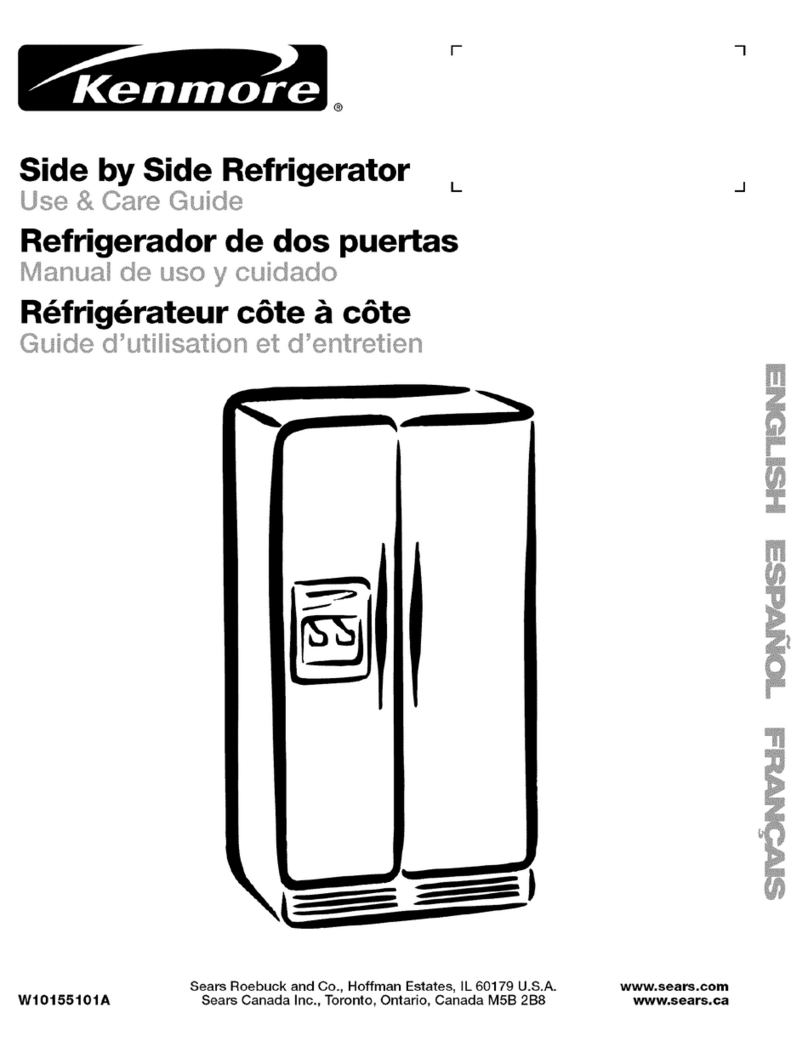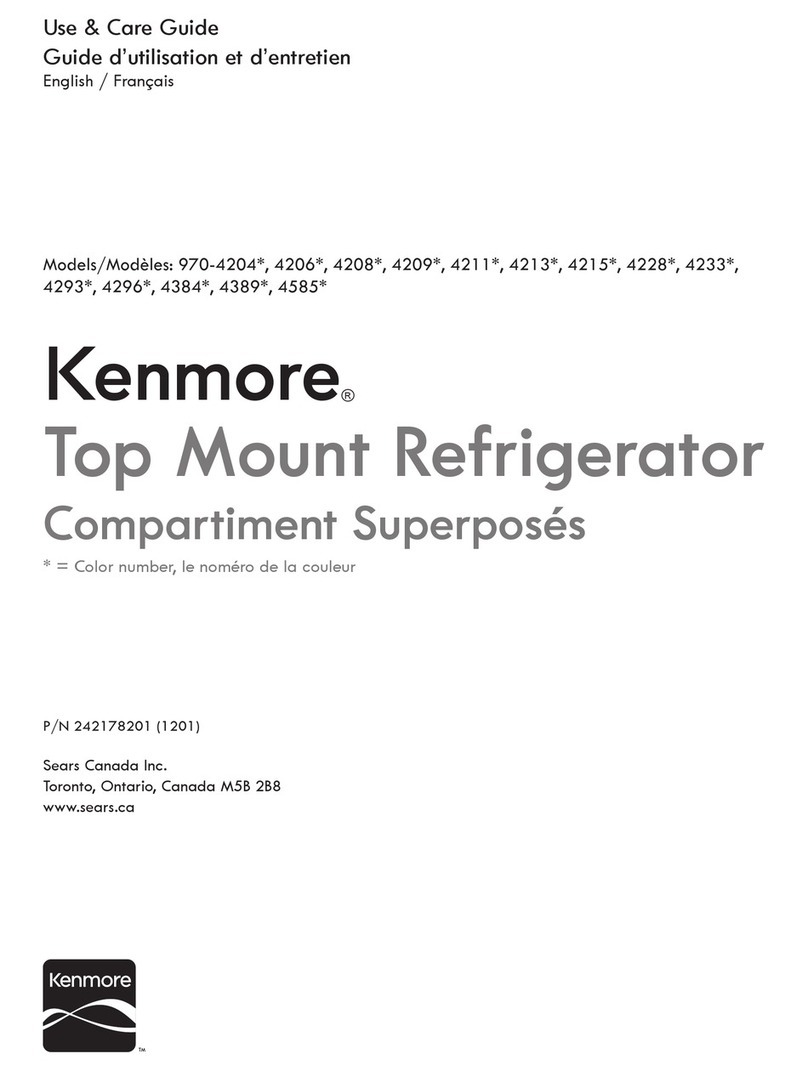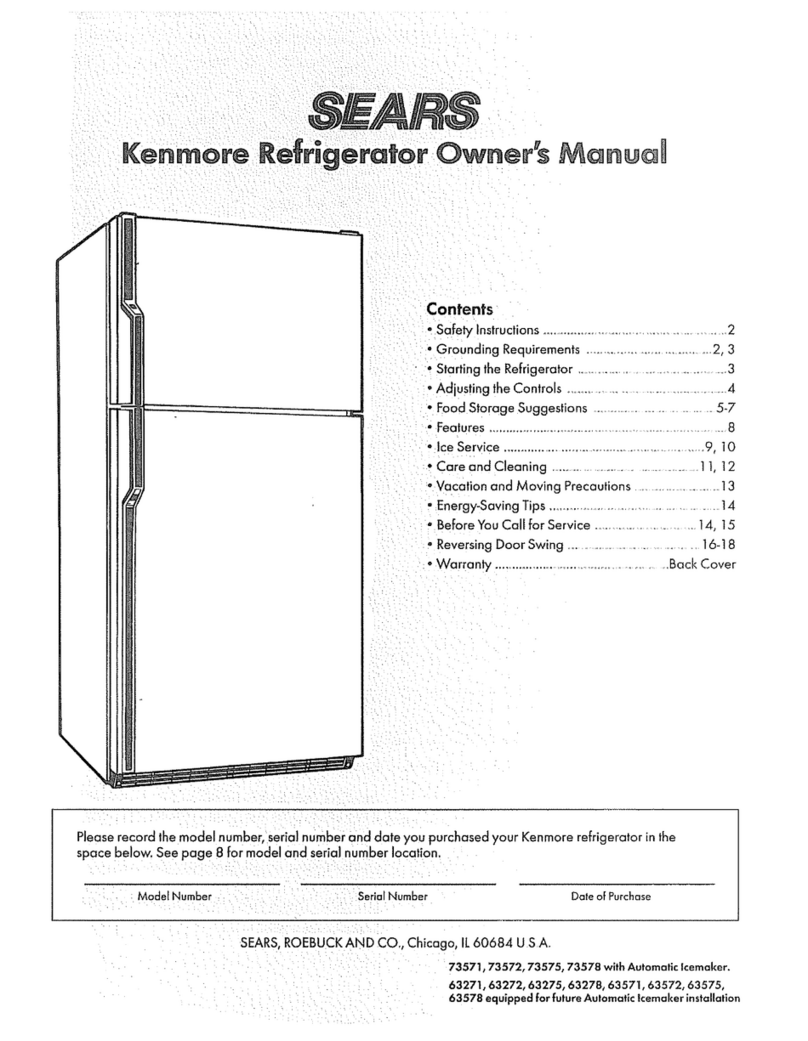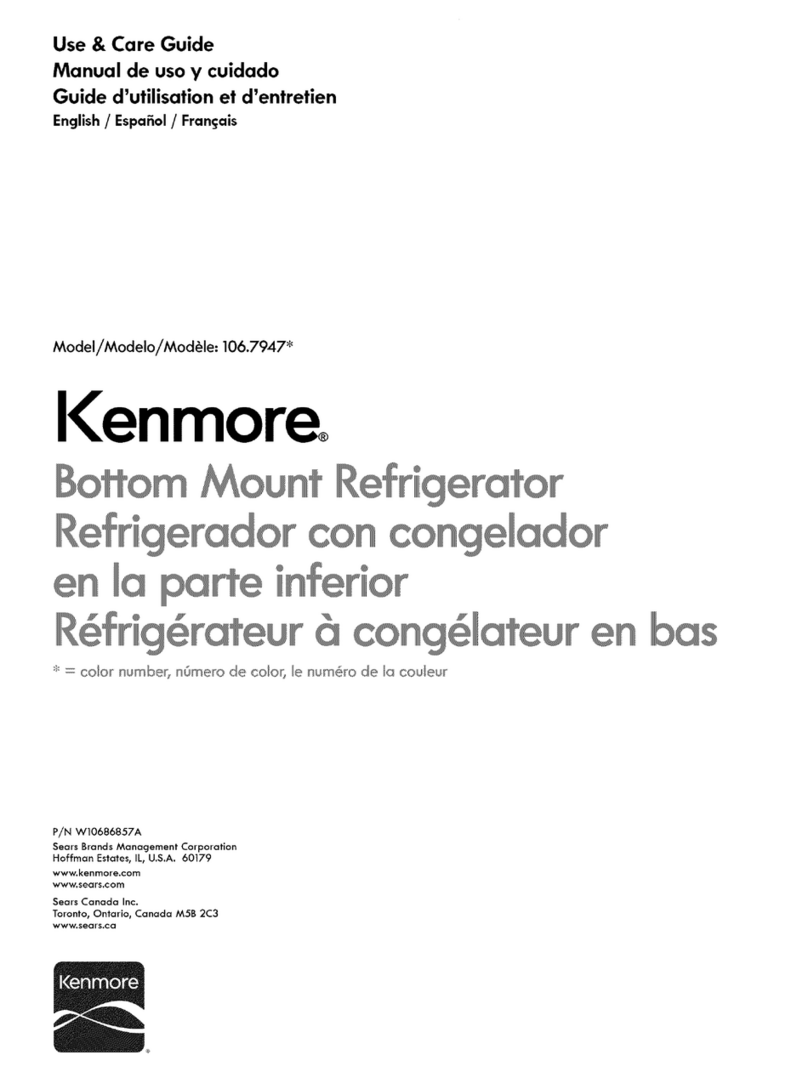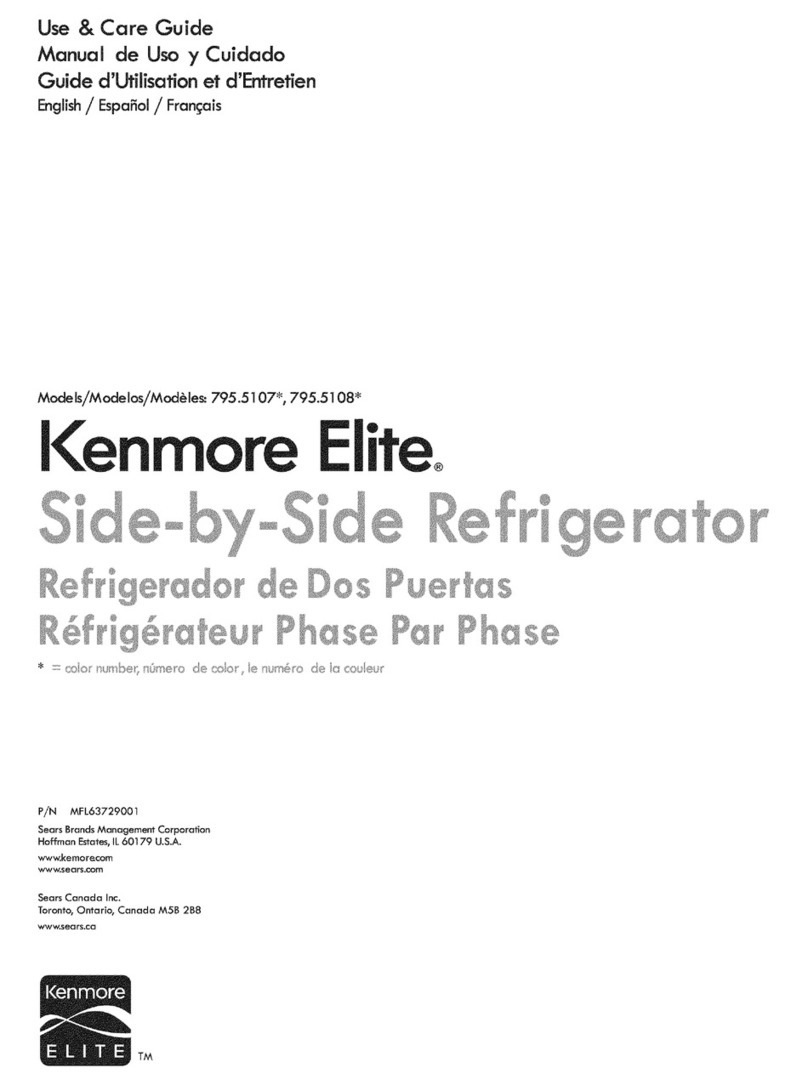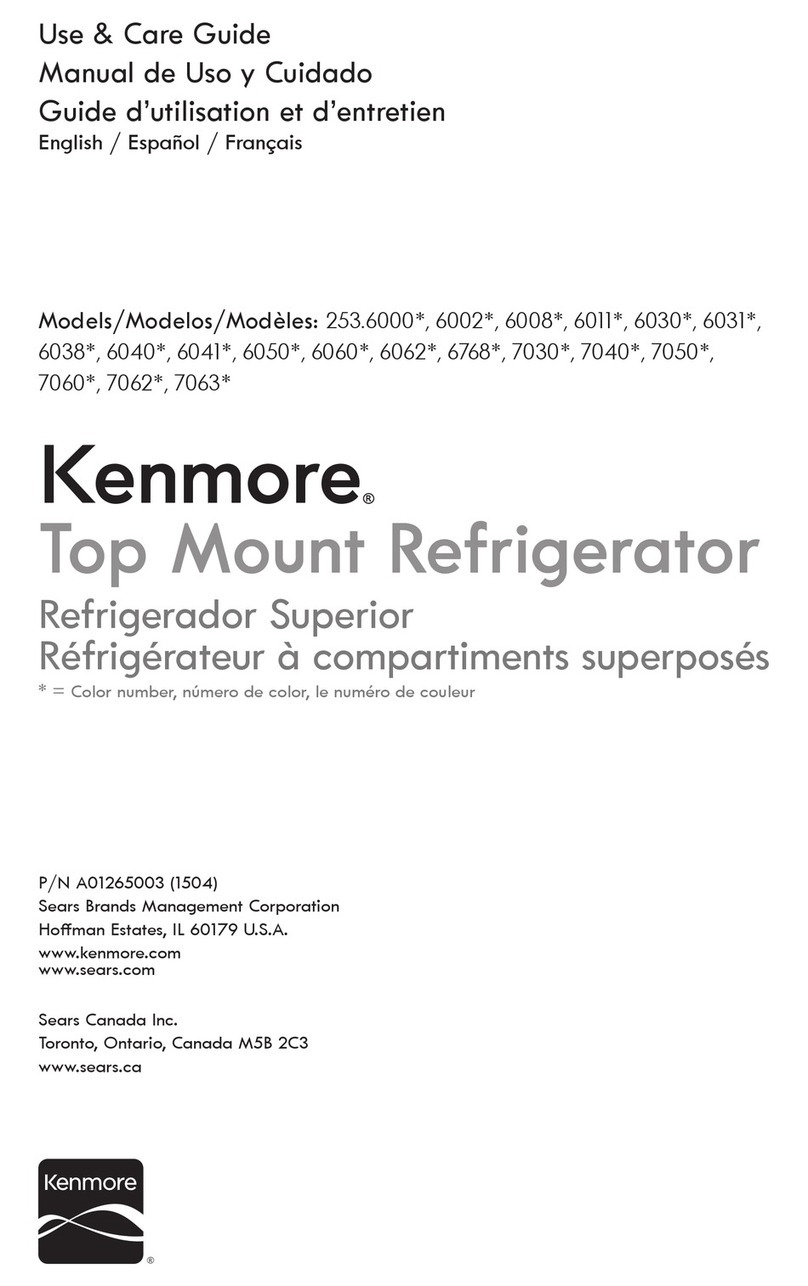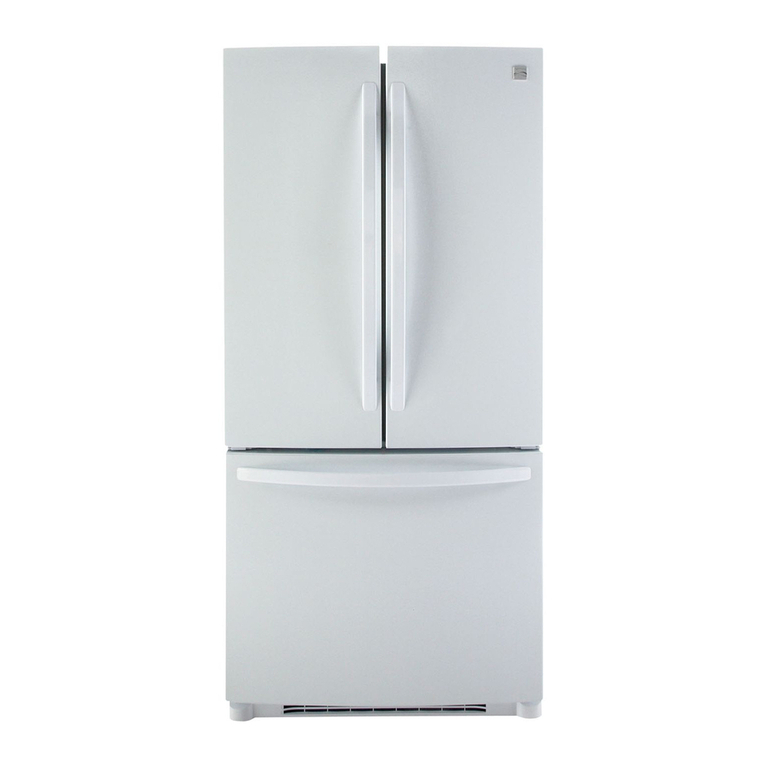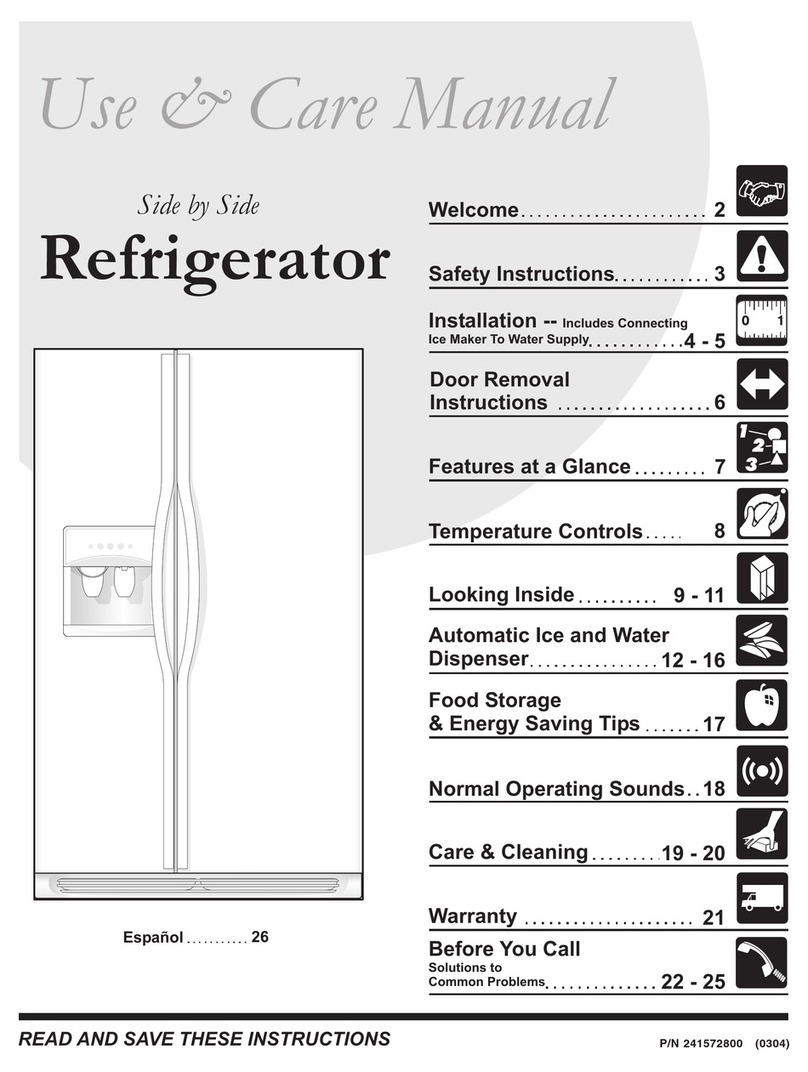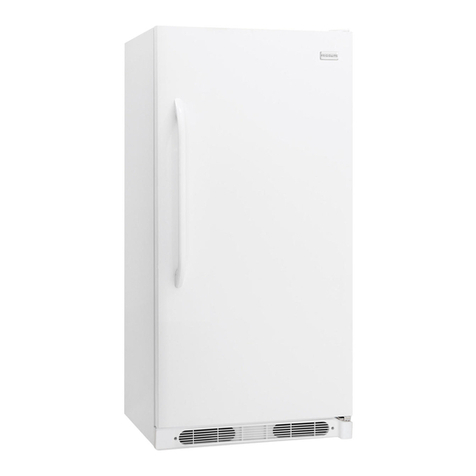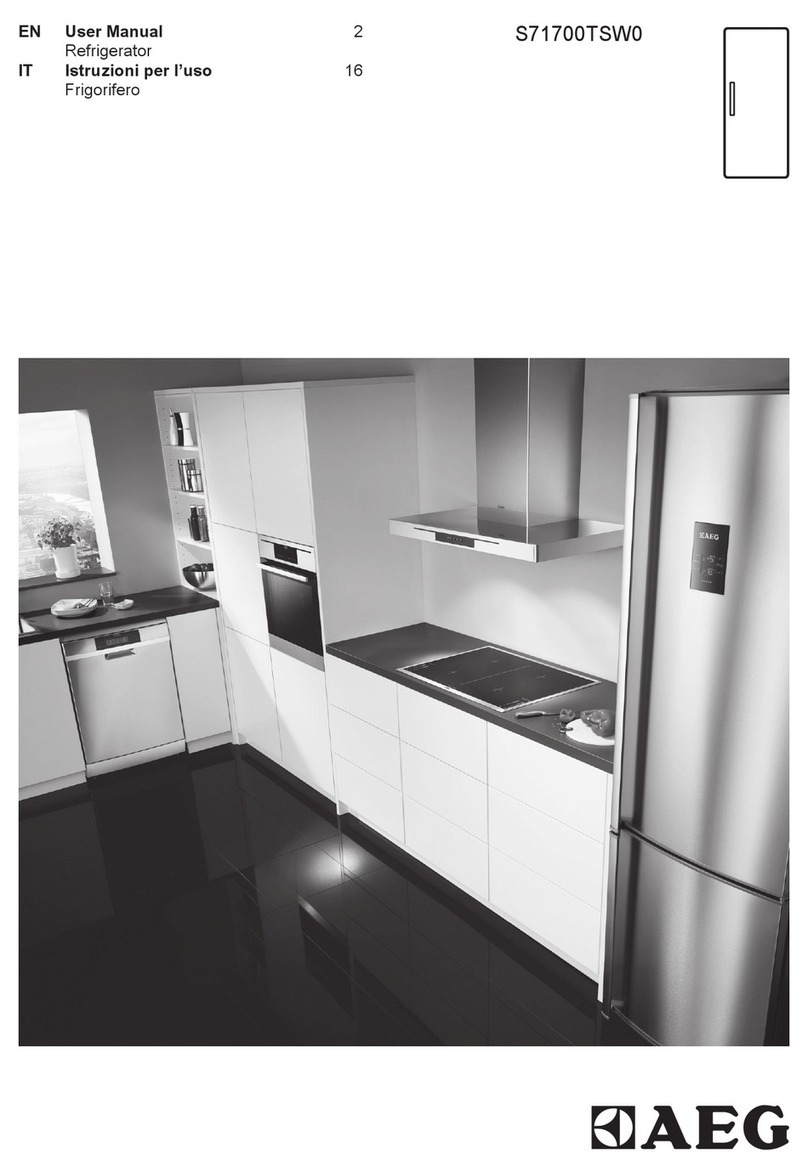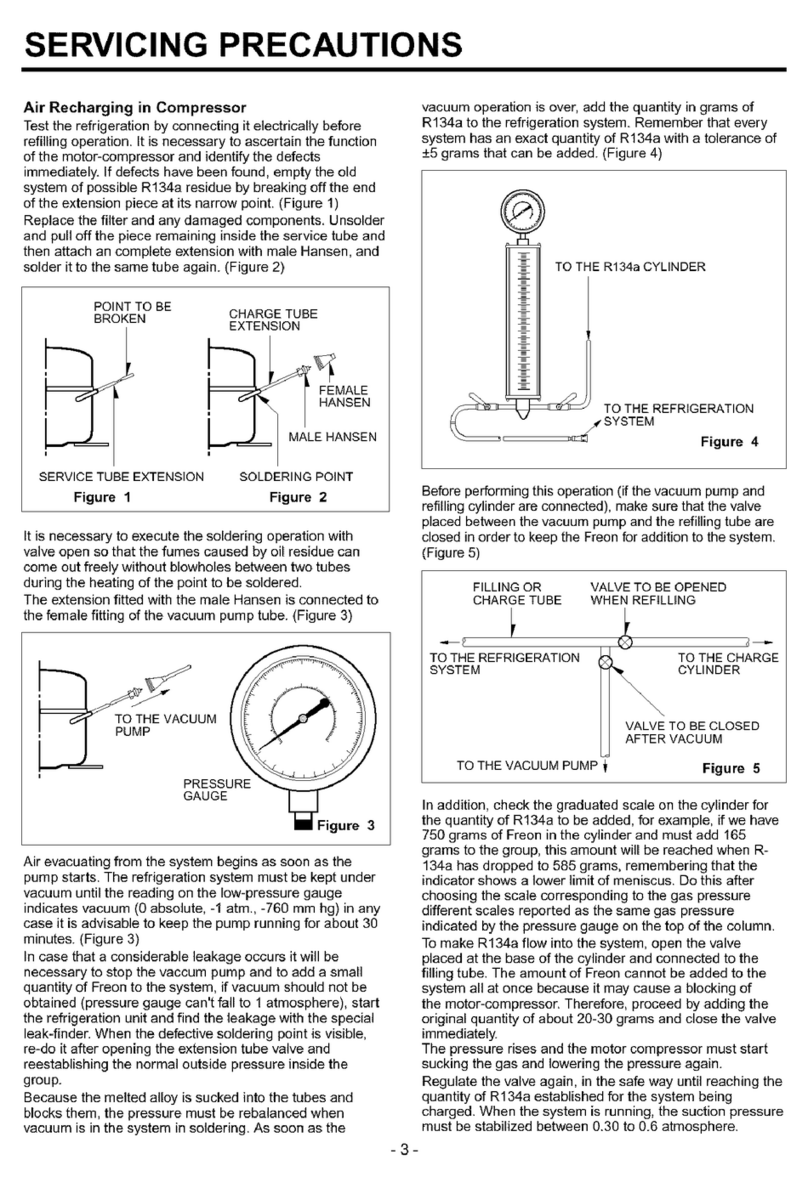
Tostarttherefrigerator,turnthetemperaturecontrol
tothepositioncorrespondingto thedesiredcooling
(thinlineisleastcold,thicklineismostcold).
Therefrigeratortemperaturewillvarydependingon
thequantityof food storedandonthefrequency
whichwhichthedoorisopened.
SETTING THE THERMOSTAT:
The thermostat setting can be adjusted from the thin
end of the graduated blue line (minimum setting) up to
the thick end of the graduated blue line (maximum
setting). The thermostat dial is located inside the
refrigerator on the back top-right corner of the unit.
Cold Colder
CLEANING:
Before cleaning the refrigerator, always empty and
disconnect from the power supply. To clean the inside,
use a soft cloth and a solution of a tablespoon of
baking soda to one quart of water, or a mild soap
suds solution, or some mild detergent. Wash shelf in a
mild detergent solution, then dry and wipe with a soft
cloth. Clean the outside with a soft, damp cloth and
some mild detergent or appliance cleaner.
VACATION TIME:
For short vacation periods, leave the control knob at
the usual setting. For longer absences;
a) Remove all foods,
b) Disconnect from electrical outlet,
c) Leave door open to avoid possible formation of
condensate, mold, or odors.
POWER FAILURE:
Most power failures are corrected within an hour or
two, and will not affect your refrigerator
temperatures. However, you should minimize the
number of door openings while the power is off.
During power failures of longer duration, take steps to
protect your food by placing dry ice on top of
packages.
IF YOU MOVE:
Remove or securely fasten down all loose items inside
the refrigerator. To avoid damaging the leveling legs,
turn them all the way into the base.
SOME IMPORTANT RULES FOR THE CORRECT USE
OF THE REFRIGERATOR:
"Never place hot foods in the refrigerator.
" Beverages should be stored in sealed containers.
"Foods to be stored for a long time should be
wrapped in cellophane or polyethylene, or kept in
glass containers. Never place spoiled foods in the
refrigerator.
"Do not overload the refrigerator.
"Do not open the door unless necessary.
Should the refrigerator be stored without use for
long periods it is suggested that, after a careful
cleaning, you leave the door ajar to allow the air to
circulate inside the unit in order to avoid possible
formations of condensate, mold or odors.
FOOD STORAGE SUGGESTIONS:
Fresh Food Compartment
"Never cover shelves with aluminum foil or any other
shelf covering material as it may prevent air
circulation.
"Allow warm foods to cool to room temperature
before placing them in the refrigerator.
"Always cover open dishes of food, especially
leftovers. Use leftovers within 2-3 days.
5


